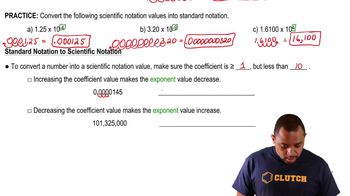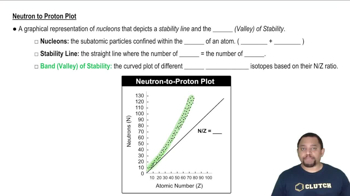Fill in the gaps in the following table, assuming each column represents a neutral atom.
Symbol 112Cd
Protons 38 92
Neutrons 58 49
Electrons 38 36
Mass no. 81 235
Complete the third row of the table.
Complete the fourth row of the table.
 Verified step by step guidance
Verified step by step guidance



Fill in the gaps in the following table, assuming each column represents a neutral atom.
Symbol 112Cd
Protons 38 92
Neutrons 58 49
Electrons 38 36
Mass no. 81 235
Complete the third row of the table.
Complete the fourth row of the table.
Write the correct symbol, with both superscript and subscript, for each of the following. Use the list of elements in the front inside cover as needed: (a) the isotope of platinum that contains 118 neutrons
Write the correct symbol, with both superscript and subscript, for each of the following. Use the list of elements in the front inside cover as needed: (b) the isotope of krypton with mass number 84 (c) the isotope of rhenium with mass number 187
(a) What isotope is used as the standard in establishing the atomic mass scale?
(b) The atomic weight of boron is reported as 10.81, yet no atom of boron has the mass of 10.81 u. Explain.